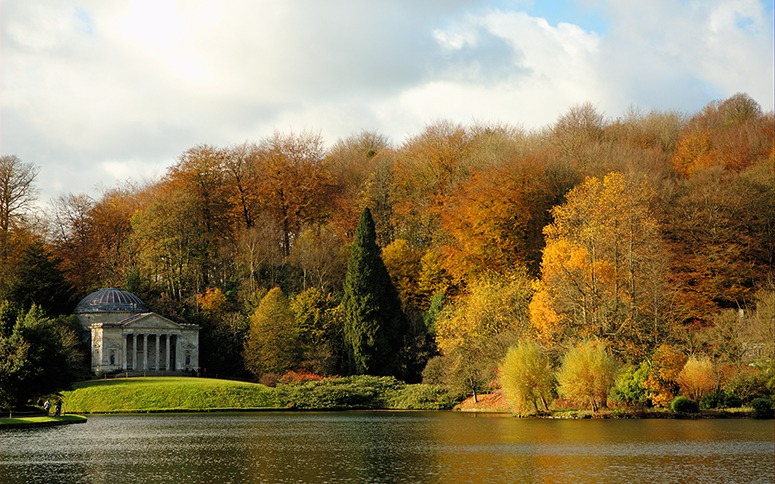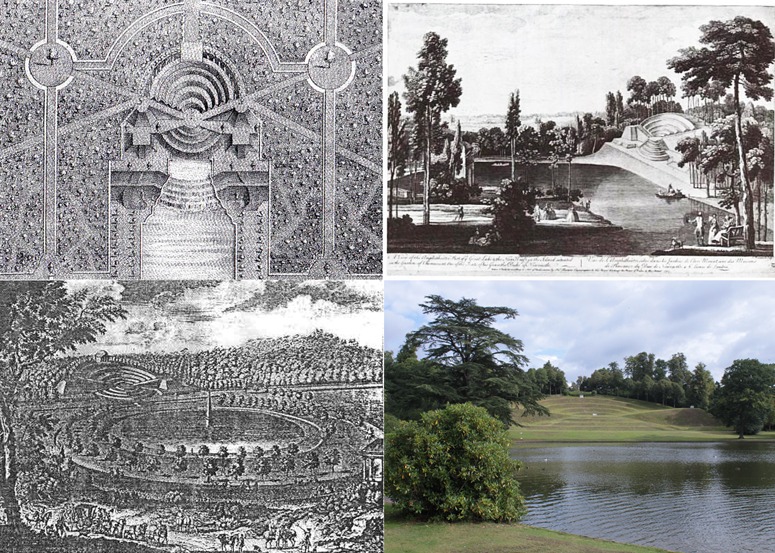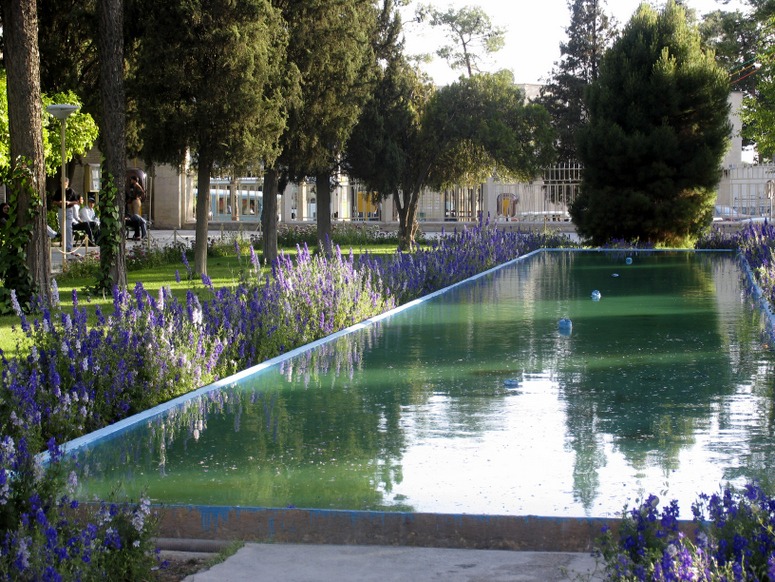 Persian Gardens have a 2500 years history. They overcome environmental constraints and manifest the cultures and beliefs of people living in an often-harsh climate. In collaboration with the Iranian Society of Landscape Professionals (ISLAP) offer a specialized tour and workshop called “Taste Paradise”. This is a unique opportunity for Landscape professionals, architects, botanists and Landscape historians to exchange information with Iranian specialist experts while visiting Persian Gardens. After our very first successful international tour and workshop “Taste Paradise I” in May 2013, The Cultural Landscape Association (CLA) is planning to offer another journeys (Taste Paradise II and III) for experts and professionals all around the globe, to visit and enjoy the cultural beauty of Persian Gardens. You can find More Information here: http://www.shahromanzar.org/component/k2/item/400-tour/%20400-tour#
Persian Gardens have a 2500 years history. They overcome environmental constraints and manifest the cultures and beliefs of people living in an often-harsh climate. In collaboration with the Iranian Society of Landscape Professionals (ISLAP) offer a specialized tour and workshop called “Taste Paradise”. This is a unique opportunity for Landscape professionals, architects, botanists and Landscape historians to exchange information with Iranian specialist experts while visiting Persian Gardens. After our very first successful international tour and workshop “Taste Paradise I” in May 2013, The Cultural Landscape Association (CLA) is planning to offer another journeys (Taste Paradise II and III) for experts and professionals all around the globe, to visit and enjoy the cultural beauty of Persian Gardens. You can find More Information here: http://www.shahromanzar.org/component/k2/item/400-tour/%20400-tour#
The dates are:
Taste Paradise II: April 12-18, 2014
Taste Paradise III: May 03- 09, 2014
Further information on Garden Tours in Iran and on Iranian Gardens:
http://www.gardenvisit.com/gardens/in/iran
http://www.gardenvisit.com/garden_tours/in/iran
Category Archives: Garden Visiting
Stourhead Landscape Garden in autumn with Radio 4, Eddie Mair and Alan Power
Let’s hope Eddie Mair returns to Stourhead with a determination to understand its importance as a work of art.
Gardenvisit.com wins 2013 Award for Best Garden Tourism Website
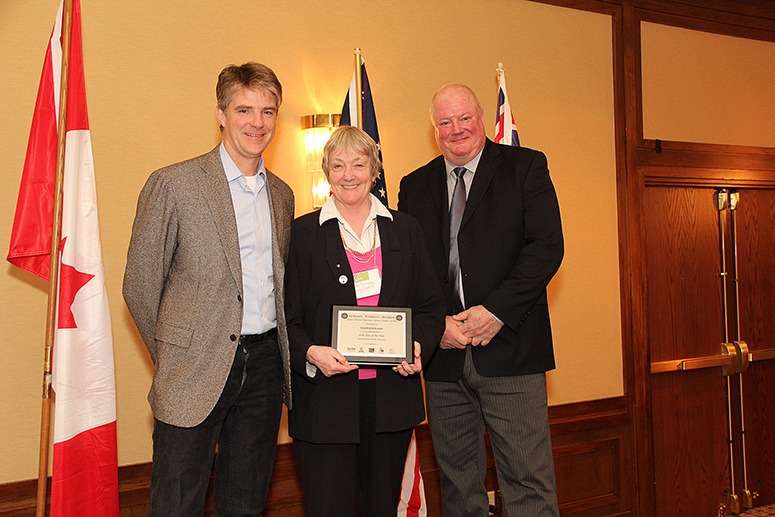 We were delighted to receive the 2013 Website of the Year Award. It was one of the Canadian and International Awards handed out during the Garden Tourism Conference in Toronto, Canada. The Garden Tourism Awards are presented to organizations and individuals who have “distinguished themselves in the development and promotion of the garden experience as a tourism attraction. Recipients travelled from across North America and as far away as Japan, France, Portugal, Italy, and Australia”.
We were delighted to receive the 2013 Website of the Year Award. It was one of the Canadian and International Awards handed out during the Garden Tourism Conference in Toronto, Canada. The Garden Tourism Awards are presented to organizations and individuals who have “distinguished themselves in the development and promotion of the garden experience as a tourism attraction. Recipients travelled from across North America and as far away as Japan, France, Portugal, Italy, and Australia”.
“It is an honor to be part of the international community that has established an awards program to recognize the invaluable contribution the world’s outstanding garden experiences make, not only in terms of environmentally friendly and sustainable tourism, but also in terms of the equally important intangible benefits that nature brings to the soul,” said Alexander Reford, Chair of the Canadian Garden Tourism Council as he handed out the Awards. Michel Gauthier, Conference Chair, closed the event by saying, “According to Richard Benfield, authorof ‘Garden Tourism’, more people visit gardens annually in the US than visit Disneyland and Disneyworld combined, and more than visit Las Vegas in any given year. Given those impressive statistics, we’re certainly on the right track as we recognize the country and the world’s finest garden experiences in this vibrant, thriving and rapidly growing segment of the international tourism market.” The inaugural Garden Tourism Awards were presented at the 2011 Garden Tourism Conference held in Toronto. To view past winners, visit: www.gardentourismconference.com and click on the ‘media’ tab. In the spirit of highlighting Canada and the world’s most dynamic garden experiences and GardenTourism’s limitless potential, the Canadian Garden Tourism Council, in consultation with a Canadian and international jury network, proudly announce the 2013 recipients of the Garden Tourism Awards.

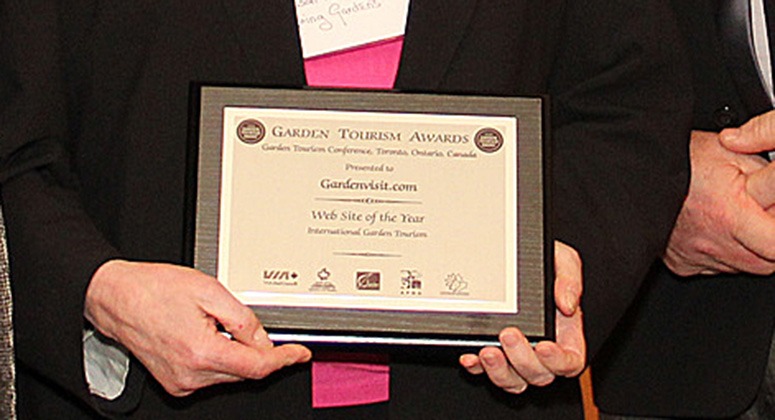
Garden tourism: ‘Is London the World’s Gardening Capital?’
I am a Londoner – and, with understandable bias, regard London as the capital city of:
- world gardens,
- garden design
- gardening
As argued in the above video, the reasons for this are both geographical and historical. Britain was emerging from the Pleistocene when horticultural techniques were devised (about 12,000 years ago) and they did not reach Britain until c3,800 BC. The art of making pleasure gardens came to London with the Romans, ended when they left and resumed when the Normans invaded England in 1066. Since then, there has been a steady advance in the popularity of gardening. Long may it continue! Britain is always likely to have a hard time competing with the Mediterranean countries for beach holidays – but it has very considerable opportunities for developing garden tourism. We were delighted to hear of the 2013 Garden Tourism Conference to be held in Toronto, Canada, in March – and have entered the Gardenvisit.com Website in hopes of receiving an award in the Garden Tourism Website category. Further information on the London Gardens Walk – and free routemaps.
Do all good gardeners believe in Santa Claus?
Of course they do!
The Claremont Amphitheatre as a problem in historic garden restoration
Clockwise, the images of the Claremont Amphitheatre show (1) Charles Bridgeman’s design, as illustrated in Stephen Switzer’s Hydrostatiks (2) John Rocque’s drawing shows the garden as modified by William Kent after 1734 (3) a drawing by an unknown artist with the water as a circular pool (4) a recent photo of the amphitheatre as a feature in what is now called Claremont Landscape Garden. Claremont is a pleasant and popular place – so why not leave it as it is? The amphitheatre was almost lost at one point and then restored by the National Trust. I am sure they were right to restore the amphitheatre but I do not think they went far enough. Stephen Switzer (in his Introduction to a general system of hydrostaticks and hydraulicks 1729) wrote that: ‘The upper part of the work may very easily be seen to be a sketch of the fine Amphitheatre at Claremont, (belonging to his Grace the Duke of Newcastle) the design of the very ingenious Mr. [Charles] Bridgeman; and the lower part, where the water spouts out, is an addition of my own, from a work of that kind that I have done for the Right Honourable the Earl of Orrery , at Marson in Somersetshire. In this composition, which I humbly conceive to be the noblest of any in Europe, may be seen a very magnificent taste and way of thinking, and in which I can’t help observing, that had the ingenious designer had more room at Claremont, he would certainly have made his water much larger than that little circular basin, which is seen therein, and which is very much eclipsed by the prodgious grandeur of that Amphitheatre. And this I note for the advantage of those who have more room for such a purpose: as for the rest the plan speaks for itself.’
Bridgeman and Switzer and are significant figures in the history of garden design and far too little of their work survives. More of Kent’s work survives. The problem with Claremont is that it lacks the high quality one would expect from such a distinguished cast, though Vanbrugh’s avenue, bowling green and Belvedere Tower are very good. My suggestion is to restore more of the design shown on Switzer’s drawing. I would like to see Switzer’s ‘water spouts’ and the first metre of the baroque canal (it could be done with jetties if there is insufficient land). Restoration of the ‘wilderness’ in which it is set would also be welcome (ie the woodland with straight rides and twisting paths). This would give Claremont a clear separation between (1) the Kentian landscape garden (2) the late baroque features designed by John Vanbrugh, Switzer and Bridgeman. If some way of arranging it could be found, a way of viewing the house and setting which Lancelot Brown designed for Lord Clive would also be highly desireable. The aim should be to make Claremont into first class garden it should be: it is in danger of becoming a public park for the middle classes.

